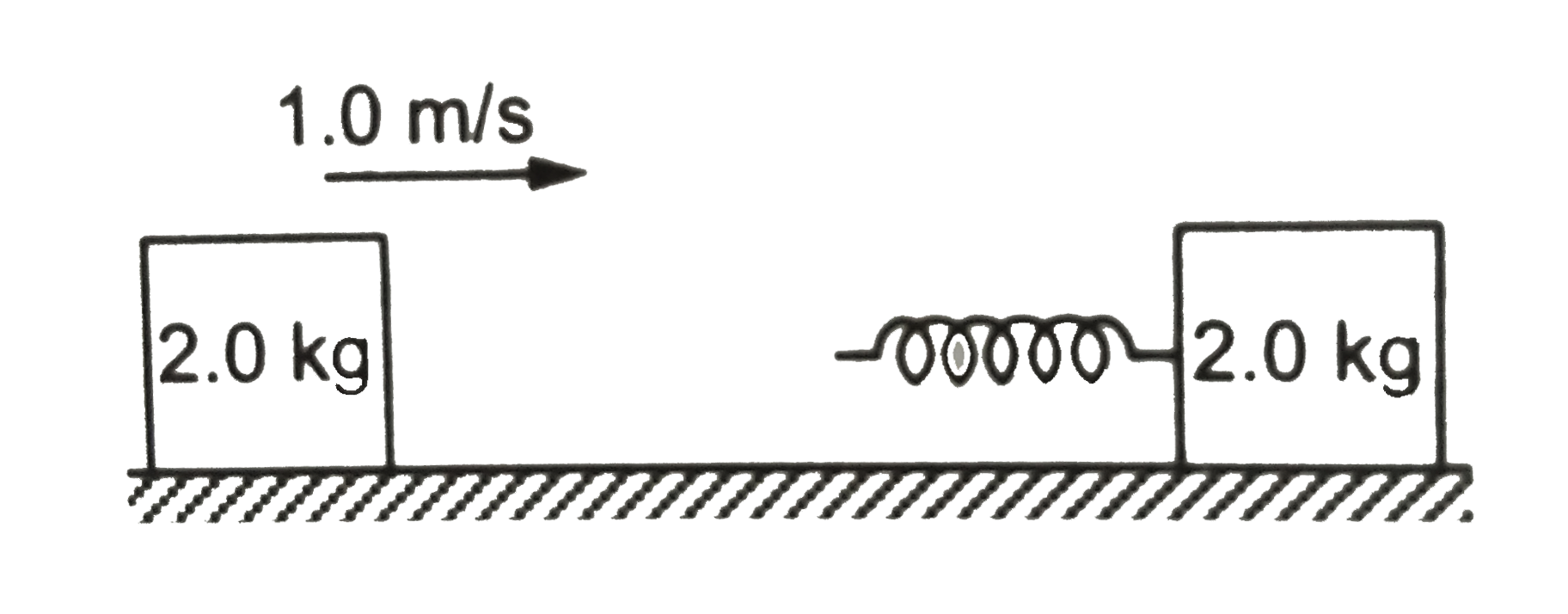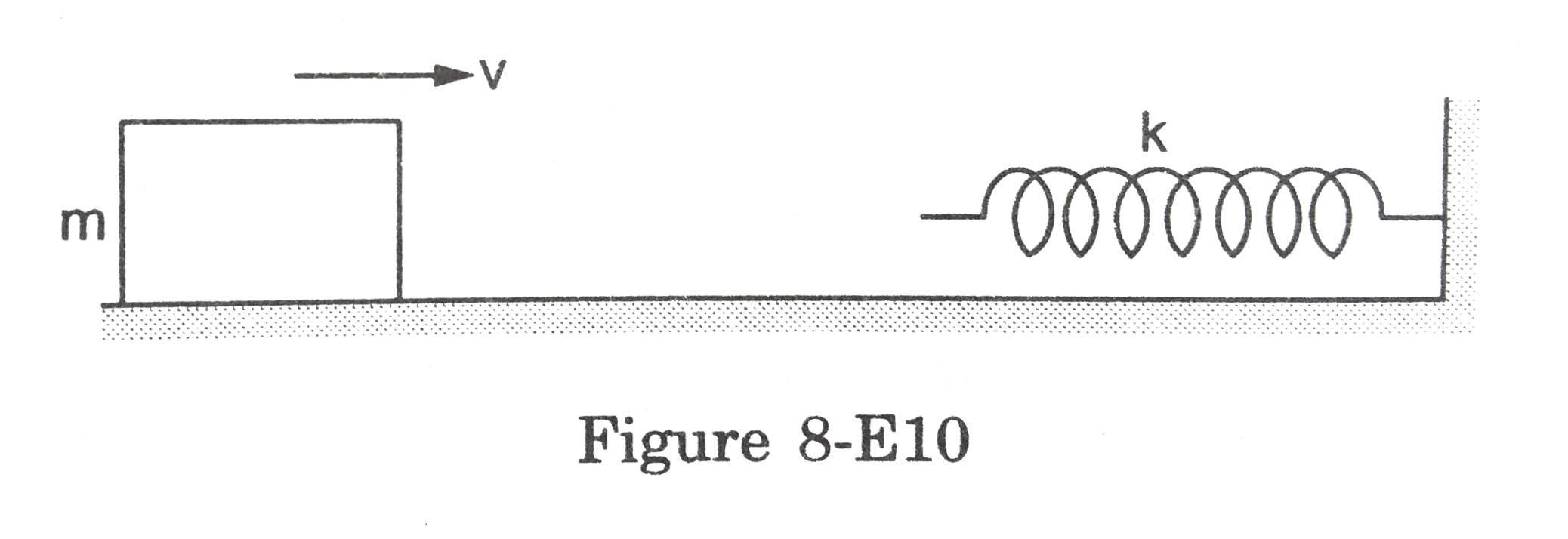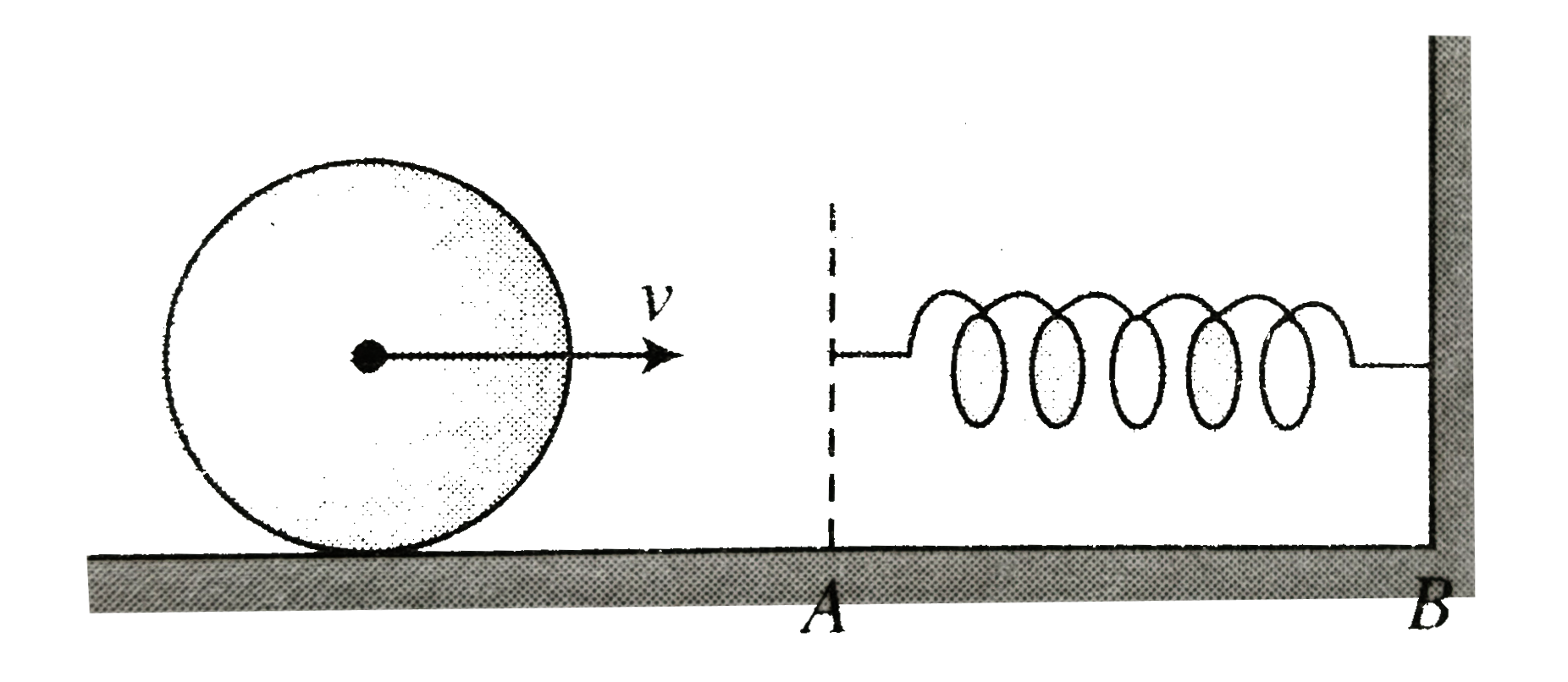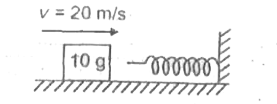A solid sphere of mass 2 kg is rolling on a frictionless horizontal surface with velocity 6m/s. It collides on the free and of an ideal spring whose other end is fixed. The maximum compression produced in the spring will be
(Force constant of the spring = 36 N/m)
√14m
√2.8m
√14m
√0.7m
The correct Answer is:B
Given, m=2 kg, v=6 m/s and k=36 N/m
=12mv2+12lω2
=12mv2+12×25mr2ω2
=12mv2+15mv2=710mv2
The potential energy of the spring on maximum compression x
∴12kx2=710mv2
⇒x2=1410mv2k
Substituting the given values, we get
=1410×2×(16)236=2.8
∴x=√2.8 m
Topper's Solved these Questions
Similar Questions
A block of mass 2 kg is moving on a frictionless horizontal surface with a velocity of 1m/s towards another block of equal mass kept at rest. The spring constant of the spring fixed at one end is 100N/m. Find the rnaximum compression of the spring
 View Solution
View SolutionA block of mass 2.0 kg is moving on a frictionless horizontal surface with a velocity of 1.0 m/s figure towards abnother block of equal mass kept at rest. The spring constant of the spring fixed at one end is 100 The spring constant of the spring fixed at one end is 10 N/m. Find the maximum compression of the spring.
 View Solution
View Solution
Knowledge Check
- Question 1 - Select One
A solid sphere of mass 2 kg is rolling on a frictional horizontal surface with velocity 6 m/s. It collides on the free end of an ideal spring whose other end in fixed. The maximum compression produced in the spring will be (Force constant of the spring is 36 N/m).
A√14mB√2.8 mC√1.4 mD√0.7 m - Question 2 - Select One
A solid cylinder of mass 3 kg is rolling on a horizontal surface with velocity 4ms−1. It collides with a horizontal spring of force constant 200Nm−1. The maximum compression produced in the spring will be
A0.5 mB0.6 mC0.7 mD0.2 m - Question 3 - Select One
A solid cylinder of mass 3kg is rolling on a horizontal surface with velocity 4ms−1. It collides with a horizontal spring of force constant 200Nm−1. The maximum compression producec in the spring will be :
A0.5mB0.6mC0.7mD0.2m
A 16kg block moving on a frictionless horizontal surface with a velocity of 4m/s compresses an ideal spring and comes to rest. If the force constant of the spring be 100N/m, then how much is the spring commpressed ?
View SolutionA block of mass m sliding n a smooth horizontal surface with velocity →v meets a long horizontal spring fixed ast one end and having spring constant k as shown n figure. Find the maximum compression of the spring. Will the velocity of the block be the same as v whenit comes back to the original position shown?
 View Solution
View SolutionA sphere of mass m and radius R rolls without sliding on a horizontal surface. It collides with a light spring of stiffness K with a kinetic energy E. If the surface (AB) under the spring is smooth, find the maximum compression of the spring.
 View Solution
View SolutionA 16kg block moving on a frictionless horiozntal surface with a velocity of 5cm−1 compreses an ideal spering and comes to rest. If the force constant of the spring be 100Nms−1, then how much is the spring compressed?
View SolutionA block of 10 g slides on smooth horizontal surface with 20 m/s towards a spring of spring constant 100 N/m placed horizontally (as shown in figure). The maximum compression in spring is
 View Solution
View Solution

